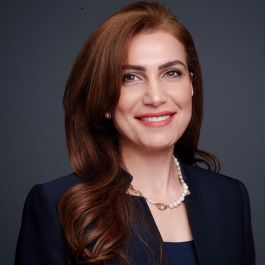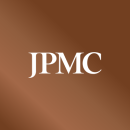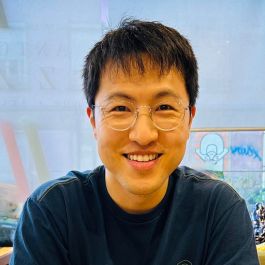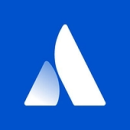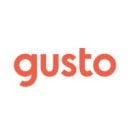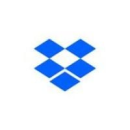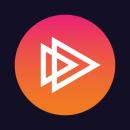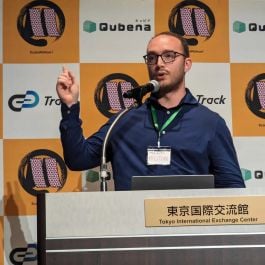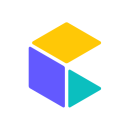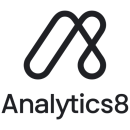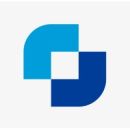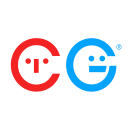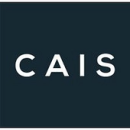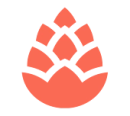Being an engineer is unlike any other profession, but it has similarities with a few.
It’s a little like being a woodworker — where knowing how to work well with your tools is the mark of a craftsman. It’s a little like being a scientist, constantly seeking new knowledge.
Being an engineer means that you have to know your tools well and constantly be ready to explore new ones.
The balance between learning new advances in the field and building the current project is a tricky thing to master. Some of the greatest tech leaders in modern history make time to perfect this balance, though. Bill Gates used to take a week off each year to dedicate solely to reading, while Steve Jobs took time to study calligraphy and Buddhism.
Built In found 13 engineers who’ve found techniques for balancing current projects with learning new skills and developing their abilities with the tools they already have.
Featured Companies
JPMorganChase is a financial services firm that works in investment banking, financial services for consumers and small businesses, commercial banking, financial transaction processing and asset management.
Give us a snapshot of what you do to stay on top of your engineering knowledge and skills.
Staying ahead in engineering requires curiosity, continuous learning and hands-on practice. I actively engage with cloud architecture and AI/ML advancements by working on complex enterprise solutions that integrate modern cloud technologies with legacy systems. I enjoy learning through a mix of structured courses, certifications and real-world problem solving. Keeping up with trends is a daily practice. I follow industry blogs, attend tech conferences and engage in our JPMorganChase knowledge sharing forums. I also dedicate time to mentoring and guiding others, which reinforces my own understanding. Learning isn’t just a scheduled activity; it’s an ongoing process that I integrate into my daily work.
What are your go-to resources for keeping your engineering skills sharp?
I rely on a combination of hands-on experience, structured learning and community engagement. AWS Skill Builder, official AWS documentation, and platforms like Coursera and Udemy help me stay technically sharp. I follow thought leaders on LinkedIn and read industry blogs for insights into trends and technologies. Engaging in architectural discussions with peers is another way I stay informed and challenge my thinking. These interactions often lead to exchanges of ideas and best practices, which I can apply to my work.
Certification programs, including AWS professional exams (which are no easy feat), challenge me to deepen my expertise and validate my skills. Preparing for these exams requires an understanding of complex concepts and the ability to apply them in real-world scenarios. This process ensures that I am well-equipped to tackle the challenges of modern engineering.
Additionally, I participate in JPMorganChase tech meetups and join discussions on cloud, AI and modernization strategies. These events provide opportunities to network with other professionals, share experiences and learn from experts. By staying engaged with our tech community, I am able to keep my skills sharp.
What does the learning culture look like at your company or on your engineering team?
At JPMorganChase, continuous learning is deeply embedded in the culture. As an architect, I work with cross- functional teams that encourage knowledge sharing through architectural reviews, tech talks and mentorship. The firm supports professional development through internal training programs, certifications and access to cutting-edge research like quantum computing.
Collaboration is key to the learning culture at JPMorganChase. Engineers and architects regularly come together to discuss new technologies, share best practices and brainstorm solutions to complex problems. This collaborative approach not only enhances our technical skills but also fosters a sense of community and shared purpose. The environment at JPMorganChase fosters growth, pushing us to stay ahead of industry trends while ensuring we deliver impactful solutions. Whether it’s through formal training programs or informal knowledge-sharing sessions, JPMorganChase is committed to creating a culture of learning and innovation and I’m proud to be part of this firm.
Capital One is a financial services company that thinks and works like a tech company, using our digital fluency to transform everything about the customer experience.

What does the learning culture look like at your company or on your engineering team?
Capital One provides engineers with a variety of resources to develop their skills while working on emerging technologies, including training programs, mentorship, conferences and more.
Atlassian has a portfolio of collaboration and work management software products that support various business teams, including software development, IT support and marketing. Its solutions help organizations plan, track, and deliver their biggest ideas together. Employees at Atlassian can choose where they work, whether that’s in an office, from home or a combination of the two.
Give us a snapshot of what you do to stay on top of your engineering knowledge and skills.
Learning schedule: As a machine learning engineer at Atlassian, I leverage the flexibility of remote work to dedicate my mornings to focused learning. Living in Seattle with collaborators in Sydney, I am able to keep my mornings relatively meeting-free to have precious focus hours.
Literature review: Social networking sites can often overflow with content where users share their opinions on emerging technologies. I find it significantly more time-efficient to delve into the original research papers authored by the inventors. Much like I prefer reading a comprehensive book on a subject that truly interests me, rather than skimming through blogs or watching YouTube videos.
Building and reproducing: From an engineering perspective, I only feel I understand a system when I can rebuild them, so I spare my personal time to reproduce systems whenever possible. For instance, in my exploration of large language models, I loved Andrej Karpathy’s amazing guidance in building NanoGPT. I followed the same footprint to write a GPT from scratch and use them as a test ground to apply other techniques on top. This way, I understand every line in my Lego blocks and can reorganize them as I learn new concepts.
Comparative analysis: We consistently evaluate our implementations, including agent orchestration, against open-source alternatives to monitor our progress and identify areas for improvement.
What are your go-to resources for keeping your engineering skills sharp?
In engineering, the process of developing new products offers the exciting opportunity to create solutions from the ground up. With the emergence of numerous machine learning models, frameworks and advancements in generative AI, we find ourselves presented with a wealth of possibilities. However, it can be all too easy to remain focused on high-level technological trends. I make a conscious effort to stay grounded in practical applications. Engaging in pair programming and participating in extensive code reviews are essential practices for me. When time constraints prevent me from meticulously building a new feature, I prioritize code cleanup. This practice not only helps me stay current with recent code changes but also deepens my understanding of the evolving codebase. Earlier in my career, I made the mistake of learning just enough to perform my job, rather than developing a deeper understanding of the technologies I was working with. Now, I consciously focus on the compounding benefits of building a solid foundation.
Yoo’s Engineering Resources
- AI Newsletter: Alphasignal
- Research paper recommendation: Semantic Scholar
- Annual conference attendance: I make it a point to attend ML conferences like NeurIPS each year, even if I don’t have a research paper to present.
- Books: I rely on books for a comprehensive understanding and use online references for quick look-ups to efficiently complete my tasks.
What does the learning culture look like at your company or on your engineering team?
Collaborative learning proves to be more effective, which is why we have successfully implemented several group learning programs. This collaborative environment fosters a vibrant and dynamic learning culture at Atlassian.
AI School: As Generative AI continues to gain traction, an increasing number of software engineers are focusing their efforts on this innovative field. To support this trend, we have established an AI school that offers foundational courses in machine learning (ML 101) as well as training on Atlassian-specific platforms and tools. This initiative is designed to reach a wider audience of software engineers, enhancing their skills and knowledge in AI.
ML Reading Group: Our biweekly ML reading group encourages vibrant discussions on the latest research papers, attracting enthusiastic participation across the orgs who often sign up months ahead of time.
AI Summits: We organize cross-organizational AI summits where each team presents their experiences in developing AI products. These sessions cover their methodologies, engineering challenges, product insights and key learnings.
Qualtrics is an information tech company that created a platform that serves as a single system of record for companies to track all experience data, managing customer, product, employee and brand experiences.
Give us a snapshot of what you do to stay on top of your engineering knowledge and skills.
To stay updated with engineering knowledge and skills, I prioritize newsletters, books and white papers. I subscribe to various newsletters about IT topics, including system design and emerging technologies like AI, as well as product management/design. Books are my choice for deep dives into specific areas or technologies, providing more comprehensive understanding than short articles. Occasionally, I explore white papers to investigate successful or pioneering systems. When faced with complex content, AI serves as a tool for clarification and deeper understanding. I dedicate at least 20 minutes daily to reading newsletters to ensure I stay engaged with the subscribed content.
Banás’ Engineering Resources
- Newsletters like newsletter.pragmaticengineer.com offer deep dives on various technologies.
- “The Pulse” series is good for industry updates
- I also like blog.bytebytego.com, which is focused on system design.
- posthog.com/newsletter: Covers product management for engineers.
- pointer.io: Provides a summary of interesting articles twice a week, ranging from system design to management.
- Books: I select books based on the topics I’m interested in, often relying on internet reviews to choose the best options.
What does the learning culture look like at your company or on your engineering team?
Our company fosters a robust learning culture supported by several knowledge-sharing initiatives.
Subject Matter Expert Programs: Employees can develop expertise in specific domains like security, cloud and DevOps, contributing to the maintenance of high-quality standards in these areas.
System Review Meetings: Team members meet together to read and discuss white papers.
Language Committees: Dedicated groups define companywide standards for frequently used languages at Qualtrics and provide assistance with debugging issues.
API First Group: This team conducts API reviews to ensure consistent companywide standards, offering other Qualtrics engineers the opportunity to learn best practices in API design.
Tech Talks: Held monthly, these sessions feature speakers from within the company and from partner organizations.
Root Cause Analysis (RCA) Reviews: By analyzing recent outages, we aim to learn from these events and make systemic improvements.
Design Office Hours: A meeting where recent designs are reviewed, providing an opportunity to seek feedback and learn from the solutions chosen by others.
Additionally, our company provides two valuable benefits that enhance our learning culture. A book and subscription budget allows employees to expense educational books and subscriptions, aiding in their professional development. The Qualtrics Engineer Development Program encourages engineers to dedicate up to 10 percent of their time each quarter to personal growth activities and fostering career advancement.
Gusto provides small businesses with an HR, payroll and benefits platform that assists with team management.
Give us a snapshot of what you do to stay on top of your engineering knowledge and skills.
Staying sharp as an engineer is a mix of curiosity, habit and just being around smart people. I try to keep a balance between structured learning — like reading engineering blogs, tech papers and deep dives into system design — and just getting my hands dirty with actual problems. I learn a ton from newer team members, too; they bring fresh perspectives, new tools and different ways of thinking that challenge some of my old habits (in a good way).
I also try to keep track of new trends, but not in a “chase every shiny thing” way. Instead, I focus on technologies that impact our work. If I see a new framework or best practice gaining traction, I’ll take time to explore it, even if it’s just skimming docs or hacking together a quick prototype. As for how often I focus on skill-building, it’s a mix — some weeks I’ll deep-dive into something new, and other times it’s just learning through solving real-world challenges at work.
Rosas’ Engineering Resources
I incorporate a mix of official docs, blogs and good old-fashioned discussions with the team. Some favorites include:
- Docs & RFCs: Nothing beats going straight to the source when learning something new.
- Blogs & Newsletters: Things like Android Developers Blog, Medium engineering posts and GitHub changelogs keep me in the loop.
- Tech Talks & Podcasts: I like listening to engineering podcasts when commuting or walking — low effort, high value.
- Code Reviews & Pair Programming: Honestly, some of the best learning happens here. Seeing how others approach problems, especially newer team members who might be more up-to-date on the latest trends, helps me refine my skills.
What does the learning culture look like at your company or on your engineering team?
It’s pretty solid. People are open to sharing knowledge, whether through documentation, code reviews or just quick Slack threads. There’s a good mix of senior engineers mentoring newer folks, but also the reverse — newer team members bringing fresh ideas and tools to the table. I’ve definitely picked up things I wouldn’t have considered just by keeping an open mind to what they bring in.
We also don’t have a “just figure it out on your own” culture — if someone’s stuck, there’s always someone willing to jump in and help. That makes learning feel natural instead of a separate “thing you have to make time for.” It just happens as part of the work.
Dropbox provides cloud-based solutions for file storage, sharing, and collaboration, leveraging AI to transform knowledge work for over 700 million users.
Give us a snapshot of what you do to stay on top of your engineering knowledge and skills.
To stay sharp in my engineering skills, I like to learn by reading AND doing. I follow newsletters, tech blogs and industry publications to stay updated and participate in book clubs with my peers to analyze technical topics. Hands-on, I’ve joined several Dropbox programs that accelerated my craft, including an internal rotational program that allows engineers the opportunity to work on short-term initiatives outside of the immediate team. This expanded my expertise and exposure to new technologies.
On top of that, I actively seek opportunities to apply new knowledge through training programs like Dropbox’s AI/ML camp and the Mobile Apprenticeship Program, where I gained Android development skills and completed a production-deployed project. I’ve also joined leadership initiatives like Elevate and LEAD to strengthen strategic thinking and problem-solving abilities.
With AI’s rapid growth, I’ve integrated AI tools into my daily workflow and continually explore how they can enhance productivity and skillset. I make sure to regularly set aside time to focus on skill-building — whether through weekly self-learning or setting aside time blocks for more structured educational programs.
What are your go-to resources for keeping your engineering skills sharp?
I subscribe to a list of newsletters and blogs that cover a wide range of topics, helping me stay informed and gain insight into new tools, frameworks and industry best practices. Beyond reading, I actively participate in a number of company-provided training programs and take advantage of internal tools designed to facilitate continuous learning. These programs cover everything from technical deep dives into new technologies to soft skills development, ensuring that I’m always growing both technically and professionally.
I also attend learning sessions organized by my team and wider company, where we share knowledge on what we’re working on, discuss challenges and explore new solutions together. In addition, collaborating on projects and seeking feedback from colleagues has been a great way to refine my skills, gain perspective and learn from others who bring different expertise and viewpoints.
What does the learning culture look like at your company or on your engineering team?
Continuous learning is deeply ingrained in Dropbox culture. Engineers are encouraged to take ownership of their professional growth through a wide range of learning programs. At the team level, we host regular knowledge-sharing tech talks where members present new insights, best practices and tools. Mentorship is also a key part of our culture, both through formal mentorship programs and informal peer mentoring. Engineers regularly collaborate on complex problems, exchanging ideas and approaches to drive collective learning and innovation.
Pluralsight is an edtech company that helps organizations build better products by developing critical skills, improving processes and gaining insights through data and strategic skills.
Give us a snapshot of what you do to stay on top of your engineering knowledge and skills.
To stay on top of my engineering knowledge and skills, I make learning a priority in my daily routine. In terms of how I like to learn, I prefer a mix of hands-on practice and theoretical knowledge. I start with reading the official docs to get my basics right, and then to build further, I watch video courses and try to apply the knowledge with some hands-on practice. I keep track of new trends by subscribing to tech newsletters and following influential leaders and tech pages on social media. I don’t set a dedicated time for knowledge or skill building — I have kind of blended it with my everyday routine. But whenever I find some new tech update interesting, I set aside some time to catch up on it.
What are your go-to resources for keeping your engineering skills sharp?
I generally prefer reading the official docs of any technology that I am interested in learning. But when I need a structured and straightforward learning path, my go-to resources are the learning paths on the Pluralsight platform. Also the Skill IQ assessments help me validate my knowledge. And I believe in learning by doing, so I prefer watching video courses which guide for hands-on practice.
What does the learning culture look like at your company or on your engineering team?
At Pluralsight, the learning culture is one of the core values that drives both personal and professional growth. We prioritize continuous learning, and it’s deeply ingrained in our everyday work environment. There are dedicated slack channels where we get to discuss and share tech updates. Also, we have protected learning time blocked on our calendars on a weekly basis where we get to focus completely on learning new skills. We have recurring meetings set up for knowledge sharing as well.
Commercetools’ composable commerce platform is designed to help brands create customized, meaningful consumer interactions.
Give us a snapshot of what you do to stay on top of your engineering knowledge and skills.
As an engineer, staying up to date with the latest trends and technologies that allow us to create better software is crucial. That’s why I pay a lot of attention to these trends through newsletters and Discord groups in order to stay up to date on the space. Usually, at the beginning of the new year, I do a personal retrospective where I also like to think about what I can learn during the upcoming year. I try to focus on 2-3 major things. For example, this year my priorities are AI, MongoDB and Scala. After identifying my priorities for the year, I try to spend time in communities and search online to find valuable resources about the topics that I want to study, like videos (paid or free), blog posts and websites (e.g., microservices.io for studying microservices).
Last but not least, I try to connect on LinkedIn and X with influential people about the topics that I want to deepen (e.g., following Sam Altman on X, Perplexity, etc.). This may seem obvious, but it can provide so much value! I tend to use the recommendation algorithm on these social networks to my advantage, so that after some time, my feed is curated with relevant and useful information on my priority topics.
What are your go-to resources for keeping your engineering skills sharp?
Usually, I tend to use a mix of these things to keep updated.
I also use local meetups and conferences; connecting with people gave me so much value in my career. Some of my favorite newsletters are: Stay up-to-date about Scala: This Week in Scala Tech, tldr.tech, Chris Richardson newsletter who is the creator of Mircroservices io, and ByteByteGo.
I also tend to use ChatGPT with tasks to let AI send me the latest news in the tech landscape every week.
Depending on what I’m trying to learn, the resources I gravitate toward vary. For example, to study a new programming language I prefer to watch videos, while to deepen a tool/library I already use, I tend to dig into the documentation plus some Medium posts. The rest of my learning comes from experimenting on my own.
Lentino’s Engineering Resources
- Telegram communities
- Medium or Substack
- Discord groups
- Social media (Linkedin, X and Bluesky mainly)
- Daily.dev
- Hashnode
- Hackernews
What does the learning culture look like at your company or on your engineering team?
At commercetools, we have plenty of opportunities to enhance our skills. We dedicate time to professional growth through a few formats.
The first is X&X Days, two days per quarter focused on collaboration and knowledge exchange. During this time, we work together to develop projects that we later present in a “show and tell” session.
The second is X&X Time, four days each quarter for individual learning and exploration. Whether it’s experimenting with a new framework, studying a new library or finishing that book you’ve been meaning to read, the time is ours to use productively. We also have the flexibility to work on collaborative projects, such as tech debt removal.
My favorite initiative is Chapters. Chapters play a crucial role in managing a backlog of technical topics, ensuring that engineering challenges are identified and resolved effectively. Commercetools introduced a unique rotation system allowing the Chapter to perform efficiently. Instead of a fixed team, engineers temporarily join a Chapter team each month, dedicating their time exclusively to Chapter-related projects. This dynamic structure allows fresh perspectives, shared knowledge and continuous improvements.
Analytics8 is a data and analytics consultancy.
Give us a snapshot of what you do to stay on top of your engineering knowledge and skills.
I stay current in engineering through my consulting role, where real-world challenges expose me to new ideas and technical skills daily. Client work offers hands-on learning — no hype, no perfect scenarios and no prepackaged solutions. Often, the problems we tackle have no blueprint, requiring creative problem-solving. Applying these principles firsthand and seeing different approaches in action has refined my ability to adapt across tools and technologies.
Beyond client work, I push myself by building independent projects. A former colleague jokingly called this my personal “Skunk Works.” Testing new tools in low-stakes projects helps me decide if they’re ready for production. These side projects let me explore personal interests and define ‘done’ on my own terms. Completion isn’t the goal — real-world application is.
When I was a junior consultant, just getting an existing project running was a win. Now, I stay open to failure — if a project doesn’t spark joy, I move on. Forcing every project to completion leads to burnout. Longevity in tech comes from learning to love the work. You don’t need to track every trend, but you should build or learn a few times a year.
What are your go-to resources for keeping your engineering skills sharp?
Outside of hands-on work, I stay sharp by consuming industry content. I skip books focused on the latest tech trends and start with foundational books. Having a strong foundation helps you adapt quickly to new technologies and future-proof your career as AI evolves. I pick the dustiest multi-edition book with a million used options on Amazon. In tech if a book has lasted a decade or more, it’s worth a read.
I also subscribe to every free Substack, sub-Reddit and industry newsletter I can find. They’re full of noise, but over time, you absorb jargon, design patterns and inspirations for side projects. I follow the tech blogs for tools I use to stay up to date on new features and case studies. Hacker News is another go-to; it aggregates insights beyond my industry.
Everything should be taken with a grain of salt, but even the 100th, “how do I improve as a first-year engineer?” post reveals what junior team members may be thinking but not saying. The best part? It justifies high screen time, even after my New Year’s resolution to quit social media.
What does the learning culture look like at your company or on your engineering team?
I work at a company with a strong learning culture. Some see Slack as a distraction, but our discussions are thoughtful and searchable. It also automates tech blog posts and connects us to external Slack groups (dbt Slack, Locally Optimistic and more). Most importantly, it allows our CTO to chime in when an off-the-cuff idea needs a reality check.
At Analytics8, everyone has access to a company Udemy subscription — ideal for learning new skills or earning certifications. As a consulting firm, we develop best practices, share accelerators and set standards that help us deliver value quickly and consistently. Consulting also exposes us to diverse perspectives, sharpening problem-solving. We cut through hype — you should never aim to be someone else’s beta tester.
Our success comes from a strong learning culture and the collective wisdom in the room. Maintaining it isn’t about individual effort alone — it requires small contributions from many. Keeping my skills sharp strengthens our institutional knowledge, but I don’t need to know everything all the time. Often, the best way to stay sharp is recognizing when to step away.
TrueML is a team of inspired data scientists, financial services industry experts and customer experience fanatics building technology to serve people in a way that recognizes their unique needs and preferences as human beings. The company endeavors to ensure nobody gets locked out of the financial system. TrueML has a highly diverse management team, mandates unconscious bias training and uses hiring practices that promote diversity.
Give us a snapshot of what you do to stay on top of your engineering knowledge and skills.
My journey as a software engineer has been a bit unconventional. The majority of my professional experience comes from working at TrueML Products, which means I haven’t had the opportunity to switch between different engineering roles or gain exposure to industry standards and updates that typically come with such transitions. Instead, most of my learning comes from tackling the design problems that land on my desk.
As an engineering manager, my process is fairly consistent. I usually start by consulting with our head architect or the tech lead for the relevant domain to see if there are any standard solutions or established best practices for the problem at hand. From there, I dive into research, starting with the official website and documentation of the technology in question. I’ll explore any tutorials available and try to recreate my use case in its simplest form. Once I’ve explored a few potential solutions, I bring them to the team for a design discussion. These discussions are invaluable — hearing my colleagues’ opinions helps me refine the solution and test its robustness.
What are your go-to resources for keeping your engineering skills sharp?
First and foremost, I learn from the incredibly talented engineers here at TrueMLP. We’re fortunate to hire experts in their respective domains, and it would be a huge missed opportunity not to learn from them. Their wealth of experience is invaluable to my own growth as an engineer.
Whenever I’m tasked with designing a new technical solution for an initiative, or when I find myself working with a new system, I make it a point to check for relevant Udemy or Coursera courses. These platforms offer great ways to quickly get up to speed. And, because I’m a bit of a nerd, I also keep an eye out for sales on these sites — sometimes, the right course at the right price can make all the difference.
In addition, I regularly check Hacker News for anything that piques my interest. When I come across a topic that stands out, I dive deeper into it, using that spark of curiosity to guide my learning and exploration.
What does the learning culture look like at your company or on your engineering team?
At TrueMLP, we are encouraged at every level to stay curious and continuously seek knowledge from both internal and external sources. The culture here fosters a mindset of learning and growth, which is vital for keeping up with the fast-paced tech world.
Internally, we have regular opportunities to share and exchange knowledge across the organization, particularly through our weekly “lunch and learn” sessions. These gatherings allow us to dive into new topics, share insights and learn from each other’s experiences.
Externally, we receive strong support in our professional development through expense reimbursement, which helps us pursue various learning opportunities. Whether it’s enrolling in training courses, obtaining certifications, attending industry events, participating in hackathons or joining meetups, we are encouraged to expand our skill sets. Additionally, we are provided with resources to help us discover these opportunities, ensuring that we have the tools we need to continue growing.
Finally, every initiative and ticket we work on presents an opportunity to learn something new. We’re given the time and space to explore and deepen our technical understanding.
CarGurus operates an online automotive marketplace connecting buyers and sellers of new and used cars in the United States, Canada and the United Kingdom.
Give us a snapshot of what you do to stay on top of your engineering knowledge and skills.
I’m naturally curious, so I’m always keeping up with emerging trends and technologies — especially those that feel relevant to my work. For general awareness, I follow discussions on LinkedIn, attend conferences and stay active in tech forums. Within CarGurus, we have several Slack channels dedicated to sharing insights and best practices on topics like AI, front-end, back-end and more. When I want to go deeper, I balance structured learning with hands-on exploration to fully understand new concepts and apply them in real-world scenarios. Our tech team also has monthly “Pit Stop Days” —dedicated time for learning and innovation. I approach these as mini-hackathons, bringing colleagues together to experiment with new technologies and ideas.
What are your go-to resources for keeping your engineering skills sharp?
Beyond what I mentioned above... YouTube! The engineering community is incredibly generous with knowledge-sharing there. I particularly enjoy content from influencers like Colt Steele and Andrei Neagoie. I also supplement my learning with Udemy courses, technical documentation and articles in Smashing Magazine. For more interactive learning, pair programming has been invaluable — exposing me to different problem-solving approaches while helping me sharpen my own skills.
What does the learning culture look like at your company or on your engineering team?
I’ve always thought of learning as a team sport, and that’s especially true at CarGurus. Knowledge-sharing and hands-on collaboration are key to both individual and team growth. We host biweekly tech talks to share new and noteworthy work, an annual hackathon to tackle business challenges or introduce new efficiencies and a yearly science fair to showcase innovative new and in-progress work. There are also plenty of opportunities to contribute beyond day-to-day projects. For example, I was part of a Web Vitals task force that looked to improve our overall website performance. This enabled me to dive deeper into the technical specifics that can help me optimize user experiences more broadly.
CAIS is an alternative investment platform for independent financial advisors.
Give us a snapshot of what you do to stay on top of your engineering knowledge and skills.
I balance theory and hands-on experimentation to stay sharp in software engineering. I’ll read a technical book to understand a new language or framework, then immediately apply it by building a side project. Creating something tangible lets me experiment, fail and iterate in a safe environment.
A go-to tactic is recreating a project I already understand well, like a bookmark management system. This keeps me focused on the tech rather than project specs. Lately, I’ve tackled more complex projects that merge interests — like building a double-entry accounting system in Zig to improve my finances while learning a new systems language.
Beyond coding, I maintain a homelab to tinker with OS, networking and deployment pipelines. To stay current, I read Hacker News daily and watch tech videos on YouTube.
Lastly, I make learning a daily habit, even if just 20 minutes — whether reading, coding or tackling CodeCrafters challenges. The cumulative effect of small, consistent efforts really adds up.
What are your go-to resources for keeping your engineering skills sharp?
One of my top recommendations is CodeCrafters. The platform challenges you to implement real tools from scratch — like Docker or Git — providing just enough guidance that you’re not completely lost but still left to tackle the core problem yourself. It’s a fantastic way to dive deep into how these technologies actually work and come away with a richer understanding of software fundamentals.
I also rely heavily on peer recommendations and Hacker News for deciding which technical books or articles to read next. I’ve subscribed to various tech newsletters over the years, but I find that the most direct, high-quality insights still come from trusted colleagues or the Hacker News community.
For knowledge management, I use Obsidian, which helps me keep all my notes, ideas and references organized. It’s invaluable for linking concepts together and recalling what I’ve learned whenever I start a new project.
What does the learning culture look like at your company or on your engineering team?
At my company, we prioritize continuous learning in several ways. Every developer has access to CodeCrafters, which encourages exploration beyond daily tasks. We also run a weekly book club, reading and discussing a chapter at a time to stay accountable.
On my team, we’re committed to knowledge sharing and avoiding silos. No individual is limited to any single area, allowing us to work across frontend and backend with ample resources to learn from one another. Additionally, we’ve set up specialized guild meetings for both back end and front end to share knowledge, propose new ideas or approaches and discuss interesting new developments.
We also hold routine calls to help each other learn different parts of the system — whether diving into a microservice’s architecture or troubleshooting a front-end quirk. These efforts ensure learning is woven into our daily work and never treated as an afterthought.
Cedar is a healthtech platform that connects providers and payers — all powered by data science and interactive design.
Give us a snapshot of what you do to stay on top of your engineering knowledge and skills.
As an engineer in this ever-evolving technology industry, sharpening my engineering skills is a continuous and paramount endeavor. My personal learning routine involves a balanced combination of practical, hands-on exposure to real-world engineering challenges within my professional role and dedicated time each week for external learning after hours.
A key principle for me is maintaining a genuine interest in the topic at hand; motivation alone can only sustain learning to a certain extent before it is no longer perceived as relevant and engaging. To maintain this engagement, I often connect my learning objectives to a side project or task that provides real-time feedback and tangible outcomes as I am a very hands-on learner.
In addition to actively seeking out learning opportunities, I’ve found ways to integrate learning into my daily routine. For example, I’ve started using my commute time or the time I spend doing chores to listen to podcasts or audiobooks. This allows me to passively absorb information and learn new things even when I’m not actively reading.
What are your go-to resources for keeping your engineering skills sharp?
Before embarking on any learning journey, I find it crucial to acknowledge and overcome the fear of venturing outside my comfort zone into the unknown. In today’s era, the sheer volume of available information, both digital and physical, can be overwhelming and deter many from even starting. I’ve learned from past experiences that the best recommended resources are often subjective; there is no one-size-fits-all solution. The key is to start somewhere and gradually, through the learning process, develop preferences and opinions that enable the identification of key concepts and valuable information sources for personal and professional growth.
My go-to resources include reading books — and I like to read them in various formats, whether that’s physical copies, e-books or audiobooks — on subjects that pique my interest. Hacker News for staying up-to-date with industry news, GitHub for exploring code and trending projects and AI-powered tools like Perplexity to gather and synthesize information from diverse sources. Of course, I also rely heavily on the internal resources at Cedar, like the meetings, forums, demos, programs and team initiatives.
What does the learning culture look like at your company or on your engineering team?
Cedar is genuinely invested in the growth of each individual.
Internal recurring sessions like the ASG (Architecture Steering Group) meetings, Tech Lead forums, Tech Talks and Engineering Demos have been invaluable for my growth. These open forums for discussion and knowledge-sharing broaden my perspective beyond my day-to-day work within a specific domain. For instance, a recent engineering demo where a colleague showcased their use of GitHub Copilot and the resulting efficiency gains led me to adopt the tool and experience similar benefits. In addition to these recurring events, Cedar offers numerous other opportunities like hackathons, onsite meetings, a mentorship program and a partnership with Hone, all of which provide practical and interactive learning experiences that foster engineering growth.
Beyond the resources available to everyone, each team has the autonomy and encouragement to develop their own processes that promote collective learning. On top of regular retrospectives, teams have implemented various initiatives like book clubs and team tech talks to foster a culture of continuous learning.



